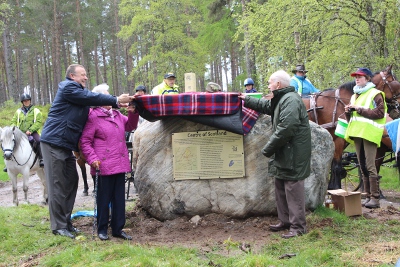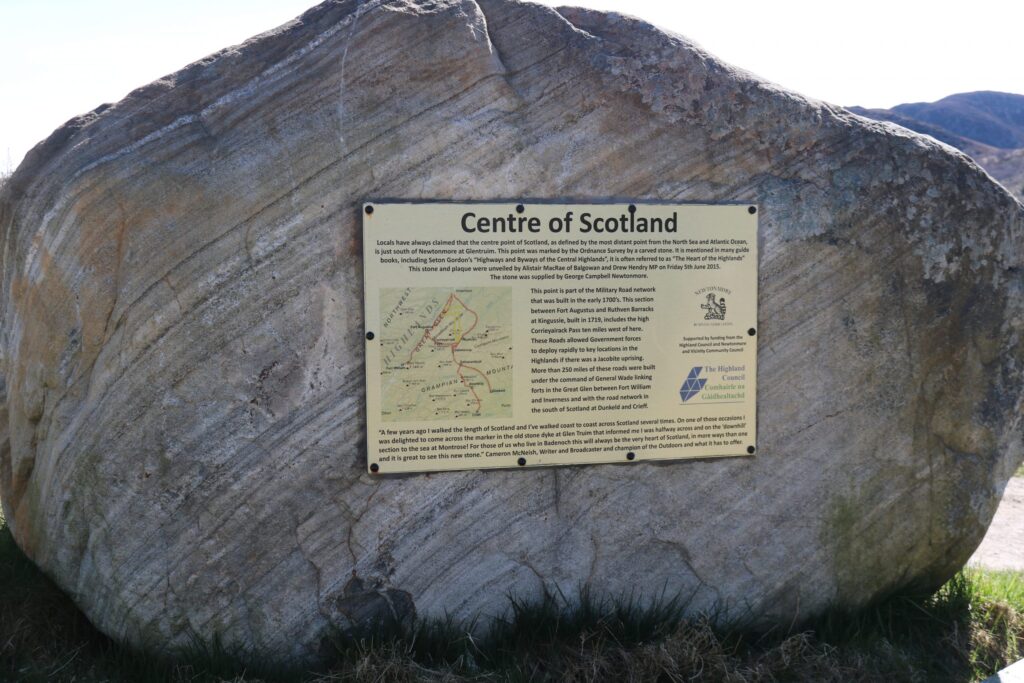Centre of Scotland


Newtonmore is the village that is closest to the Centre of Scotland and you can easily visit the site to see for yourself.
You’ll find it a little over a mile (2 kms) west of the A9, along the Glen Truim Road. The site is marked by a cross etched on a stone in the dry stane dyke on the north side of the road.
The stone with the cross is still there, it is great fun looking for it. You’ll find it a few yards before you reach a triangular forestry road junction (with a local walks waymark board) and about 125 yards before you reach the superb Macpherson Monument, from where you can enjoy terrific views of the upper Spey Valley.
The point used to be marked by the Ordnance Survey by a stone and with a plaque that was stolen and not replaced but the locals wanted the spot marked again so a Dedication Event with the unveiling of a new plaque took place in June 2015.
As you cast about, please don’t forget that you are on a public road, so take care.
There is, of course, some debate as to the location of the geographical centre of Scotland. This is due to the complexity of the calculation, the different methods of calculating the centre, and whether surrounding Scottish offshore islands are to be included.
One of the methods is to calculate the ‘centroid’ of the two-dimensional shape made by the country – to put it simply, the point at which a cardboard cut-out of Scotland could be perfectly balanced on the tip of a pencil.
Alternatively it can be deemed to be the point farthest from the boundary of the country (either the sea, or, in the case of constituent countries, a land border.
In both cases, the islands would need to be factored into the calculation – not easy.
The Ordnance Survey are reluctant to re-install a more permanent monument marking the spot, because the spot actually moves over time. Their spokesman was quoted on the BBC as saying, “It would only ever be absolute using a given method at a given time. As soon as that time of measurement passed, it would be somewhere else. This is because of factors such as the tide, erosion and accretion, which gradually change the shape of Scotland’s coastline.
What we know is that the cross on the stone marks the spot.